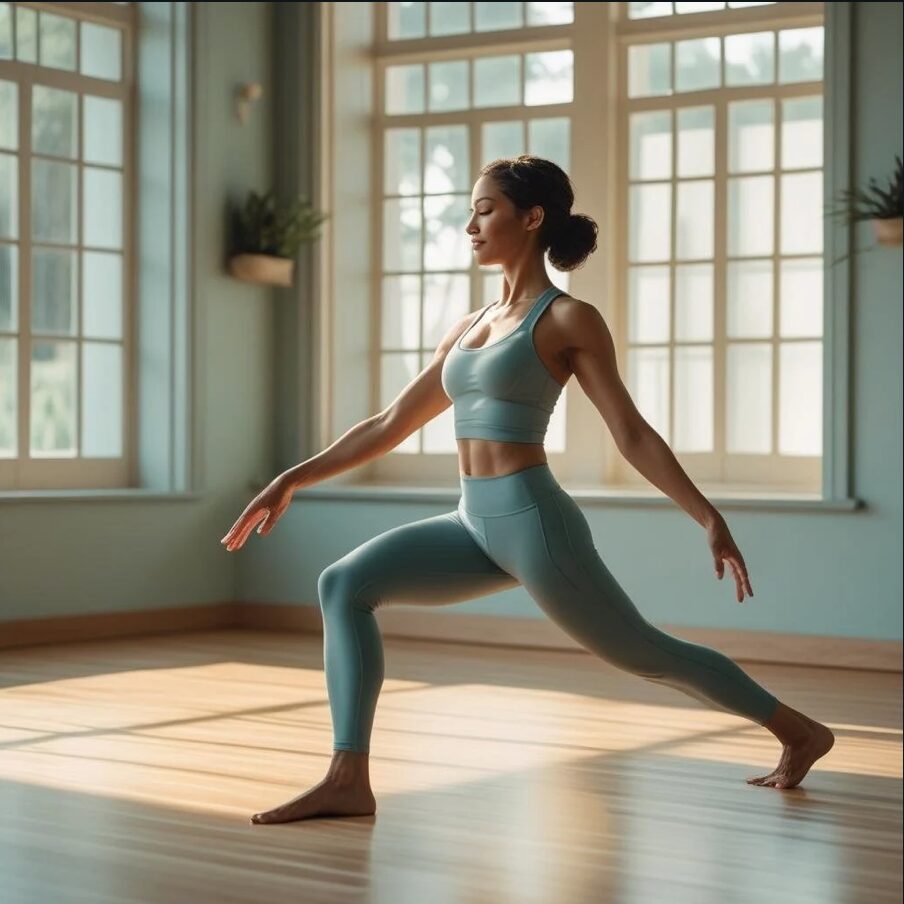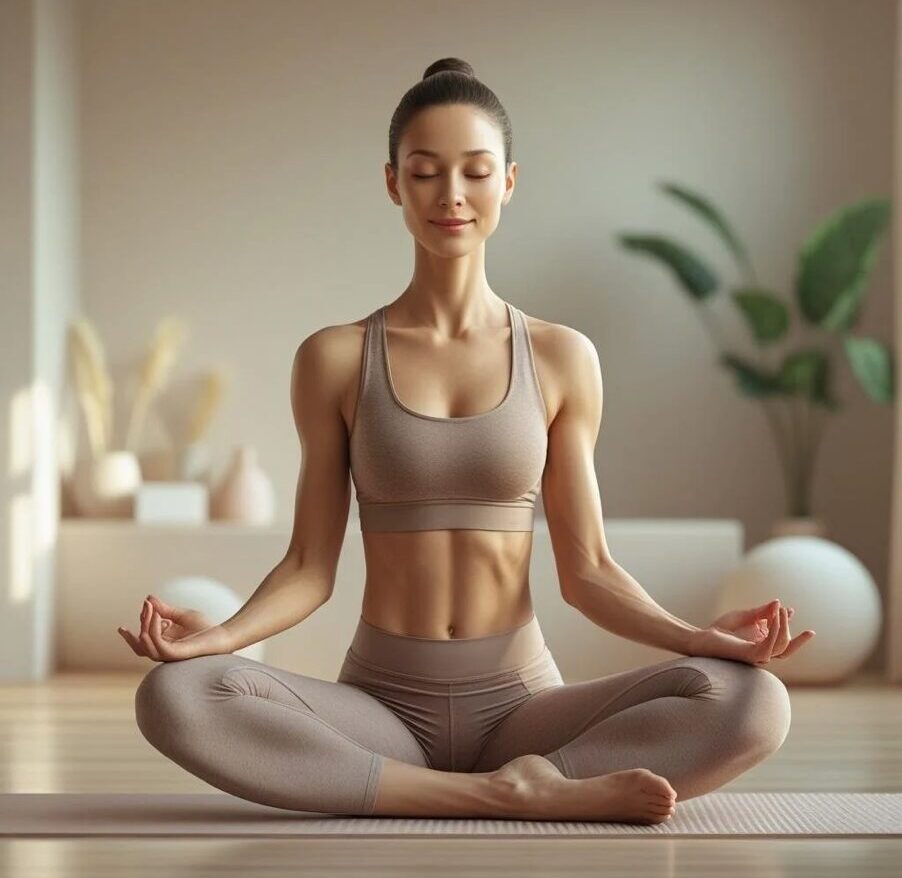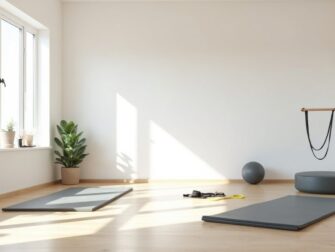Somatic Pilates is popping up more and more in fitness circles. It brings together the controlled movements of Pilates with a focus on body awareness and gentle mindbody connection. People are tuning into this approach to ease tension, tune up their posture, and sharpen their movetomove coordination. I’m putting together everything you need to know about Somatic Pilates, who it’s for, some smooth starter tips, and the realworld benefits I’ve seen (and felt) from this unique method.
Table of Contents
- TL;DR: What You Need to Know About Somatic Pilates
- Amazon Finds: Somatic Pilates Gear and Books
- Understanding Somatic Pilates: Basics and Background
- What Makes Somatic Pilates Different?
- How Somatic Pilates Gives Mind-Body Fitness a Boost
- Getting Started with Somatic Pilates: Simple Tips
- Pitfalls and What to Consider First
- Summary
- Frequently Asked Questions
- Wrapping Up
TL;DR: What You Need to Know About Somatic Pilates
If you just want the quick version, here’s what’s up:
- Somatic Pilates mixes mindful movement with Pilates exercises, creating a method that targets your nervous system and develops body awareness.
- It’s pretty handy for pain relief, stress reduction, and making regular workouts feel smoother and safer.
- If you’re looking for a routine that hits both your headspace and your muscles, it’s worth checking out. You might be surprised how much your daily routine benefits when you start tuning in with this method.
Amazon Finds: Somatic Pilates Gear and Books
- ProBody Pilates Ring – Simple Pilates rings like this one are excellent for Somatic Pilates because they add gentle resistance without taking you out of the mindful headspace.
- “Somatics: Reawakening The Mind’s Control Of Movement, Flexibility, And Health” by Thomas Hanna – The classic book that uncovers the background and daily uses of somatic practices like those found in Somatic Pilates.
Understanding Somatic Pilates: Basics and Background
Somatic Pilates is all about blending Pilates mat and apparatus work with somatic movement ideas. The word “somatic” relates to being fully present and experiencing movements from the inside out, rather than just copying exercise routines. Before jumping into why this matters, here’s a breakdown of what goes into a Somatic Pilates class:
- Slow, Controlled Movements: You’ll be encouraged to move at a speed where you can actually notice how your body is working, not just power through reps.
- Sensory Awareness: Instructors often cue students to pay attention to sensations, like where you might feel tightness, imbalance, or easy movement.
- Pilates Principles: Elements like core engagement, breath control, and proper alignment are still key players. Somatic Pilates just turns the dial up on feeling and awareness.
This type of training owes a lot to Thomas Hanna’s work in somatic education, which is all about the bodybrain connection. Joseph Pilates also aimed to create controlled, functional movement. When they mix together, you get a method that doesn’t just work your muscles but taps into your nervous system to teach your brain how to move better. The combination helps you really get a sense of what your body is doing and why.

What Makes Somatic Pilates Different?
Regular Pilates is already based on precise, mindful movement. But in standard Pilates, the focus can sometimes lean heavily toward physical toning and repetition. Somatic Pilates switches things up. Rather than hammering through a set, you’re asked to pause, sense, and adjust. Here’s what stands out for me:
- Reduces Unconscious Tension: Rather than fighting through tight spots, you use slow movement and breathing to notice and relax the tension away, making movement easier.
- Retrains the Nervous System: You might hear about “muscle memory.” Somatic Pilates gives your brain and nerves the nudge to create new patterns, so daily activities (even sitting or standing) feel smoother.
- Promotes Mindful Movement: It’s easy to get lost in a flow class or skip through exercises in traditional routines. In Somatic Pilates, attention is everything. You finish class feeling more grounded and aware of your posture and habits.
How Somatic Pilates Gives Mind-Body Fitness a Boost
Somatic Pilates isn’t reserved only for people with injuries or those looking to chill out, even though it’s super useful for both. It ramps up your mindbody fitness by:
- Boosting Coordination: Movements are slower, which gives you actual time to correct yourself midway and helps create new healthy movement habits.
- Releasing Pain and Stiffness: Focusing on releasing chronic muscle contractions helps many people find relief from pain, especially lower back, neck, or shoulder discomfort that never seems to go away with regular stretching.
- Reducing Stress: The internal focus draws your mind away from overthinking, landing you in a more relaxed space by the end of class. It’s a decent stressbuster without needing tons of meditation experience.
- Improving Balance and Awareness: The intentional pace helps you spot imbalances between your left and right sides, and over time you start to move more evenly. This means even simple daily activities like walking or reaching become smoother and safer.
Getting Started with Somatic Pilates: Simple Tips
Anyone can try Somatic Pilates, and you don’t need fancy gear or even a reformer machine. Some solid ideas to keep in mind when starting out:
- Go Slow: If you’ve done regular exercise classes where everything is about maxing out your reps per minute, this will feel different. Start at a pace where you can sense every part of each movement.
- Prioritize Feeling, Not Performance: Instead of thinking about finishing a set, focus on how the movement feels—where does it feel stuck, light, or even lopsided?
- Learn Basic Anatomy: Knowing the location of your pelvis, shoulder blades, or spine helps you follow cues in a Somatic Pilates class and get more from the exercises.
- Watch Guided Lessons: If you can’t make it to a local studio, YouTube offers plenty of intro videos. Look out for instructors trained in somatic movement or traumainformed Pilates. They’ll help you get the best experience from the start.
- Set Up a Relaxing Space: Try to find a spot with good lighting and enough room to stretch out. A calm, clutterfree area helps reinforce the mindful aspect of the session. Maybe put on some light background music to really settle in.
As a bonus: you can do Somatic Pilates from home with just a mat, a cushion, and some open floor space. Props like Pilates rings, resistance bands, or yoga blocks add more options, but aren’t strictly necessary for beginners. Remember, the heart of Somatic Pilates is tuning in to your body, not how many accessories you have.
Pitfalls and What to Consider First
Like any fitness trend, Somatic Pilates comes with a few things to think about before jumping all the way in:
- Expect a Learning Curve: Slowing down movement and focusing inward can feel awkward at first. Sometimes it even feels boring, especially if you’re used to highintensity classes. But the more you do it, the more you notice how much you’ve been missing.
- Not Always a “Sweat Session”: If you’re looking for intense cardio or burning heaps of calories, Somatic Pilates isn’t about that. It’s more about movement quality, not quantity. You may still break a sweat, but the focus is different.
- Varies By Instructor: The level of “somatic” focus can shift a lot by teacher and studio. It helps to shop around until you find someone whose approach feels right for you. Some instructors layer in mindfulness techniques or breath work, making the class even more holistic.
- May Require Patience: Results like pain relief and postural changes can take a few weeks. Stick with it, and you’ll likely notice real changes in how you move and feel day to day.

Equipment Needs
One of the perks of Somatic Pilates is you don’t need tons of stuff to get started. Some props that can really help:
- A sturdy mat for comfortable floor work
- Pilates ring for gentle resistance
- Small resistance band for arm and leg movements
- Soft ball or cushion to support different positions
- A yoga block for balance or support in seated exercises
Common Results and Real-World Benefits
Most people I’ve seen stick with Somatic Pilates for a while report better posture, easier mobility, less nagging pain, and an ability to catch themselves tensing up (and actually let it go) before it becomes a problem. Many also mention better sleep and improved focus outside class, since you’re practicing tuning in and staying present. Some even share that they start to recognize early signs of tension in other parts of their lives, like during work or stressful conversations, making it easier to let those feelings go as well.
Summary
Somatic Pilates is a unique fusion that brings together mindful movement and the classic stability work of Pilates. By paying attention on purpose, you unlock new movement patterns, reduce pain, and leave every session feeling more integrated and at ease. Whether you’re an athlete, dealing with chronic pain, or just burnt out on highintensity workout culture, this style is worth trying out for its mix of relaxation, posture tuning, and selfawareness. The true advantage comes not from the complexity of moves, but from the depth of awareness and calm you can reach. Over time, you’ll likely find everyday movements easier and more mindful.
Frequently Asked Questions
What exactly is “somatic”?
“Somatic” means focusing on your body experience and internal sensations rather than just how movements look. The word comes from “soma,” which refers to the body experienced from inside.
Can I do Somatic Pilates even if I’ve never done Pilates?
Absolutely. In fact, starting slow and mindful is often easier for beginners than trying to do a fullspeed Pilates class right away. You may find the focus on sensations helpful for building a foundation.
How often should I do Somatic Pilates for results?
Two to three sessions a week is usually enough to notice benefits in posture and relaxation. Even after your first class, you might feel more at ease. Consistency is key—a few weeks of steady practice can create lasting change.
Is this approach good for back pain?
Many people find that mindful, gentle movement helps chronic pain, including lower back pain. If you have injuries, check in with an instructor who has experience working with your specific needs. Always follow your healthcare team’s advice for safety.
Does Somatic Pilates replace therapy or medical care?
It can support physical therapy and help with pain management, but it isn’t a substitute for medical treatment. If you’re dealing with injury or severe pain, talk to your healthcare team about what’s safe for you. Always prioritize professional guidance if you’re unsure.
Wrapping Up
Somatic Pilates blends the best of mindful movement and Pilates principles, creating space for both physical ease and mental calm. The method helps sharpen your posture, unwind tension, and builds better awareness of how you move every day. It’s a smart choice for anyone curious about working out in a way that feels good from the inside out. You really don’t need much more than a mat and an open mind to get started. Give it a try, and you might stumble upon a whole new appreciation for the way your body moves.



